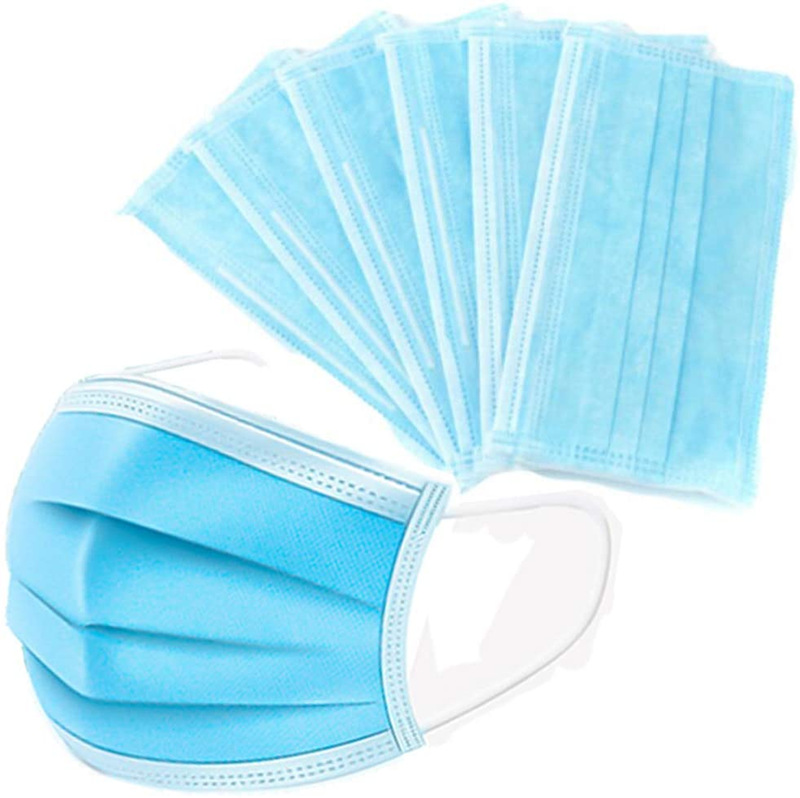Description
Surgical mask
GI face masks are manufactured on state-of-the-art machinery in our own factories. Our innovative designs and premium materials ensure that GI face masks provide reliable protection, as well as exceptional breathability and comfort, even for those with sensitive skin or who feel claustrophobic in ordinary masks.
Surgical Masks vs. N95 Respirators
There are two types of medical face masks: Procedure masks (a.k.a. surgical masks) and N95 masks (a.k.a. respirators).
It is important to understand the differences between the two:
|
|
Surgical Mask (Procedure mask) |
N95 Respirator |
| Face seal fit | Loose-fitting | Tight-fitting |
| Intended use and purpose | Fluid resistant, protects wearer against large droplets, splashes or sprays of bodily or other hazardous fluids and protects patients from wearer’s respiratory emissions | Reduces wearer’s exposure to particles including small particle aerosols and large droplets (only non-oil aerosols) |
| Filtration | Degree of protection is indicated by ASTM level | Provides wearer with a reliable level of respiratory protection by filtering out at least 95% of large and small airborne particles |
| Leakage | Leakage occurs around edges of mask when user inhales | When properly fitted, allows minimal leakage around edges when user inhales |
| Testing and approval | Cleared by Food and Drug Administration (FDA) | Cleared by Food and Drug Administration (FDA) and evaluated, tested and approved by NIOSH as per 42 CFR Part 84 requirements |
| Fit testing requirement | No | Yes |
| User seal check required | No | Yes. Every time it is put on. |
Surgical mask standard:
Choosing the right ASTM level
Medical masks should be selected based on the level of protection required for their intended use.
The ASTM (American Society of Testing and Materials) classifies the level of protection provided by medical masks as Level 1, Level 2 or Level 3 (with Level 3 providing the highest level of protection), based on the following criteria:
| ASTM Requirements | ASTM Level 1 | ASTM Level 2 | ASTM Level 3 |
| Bacterial filtration efficiency (BFE) | ≥ 95% | ≥ 98% | ≥ 98% |
| Particulate filtration efficiency at 0.1 μm (PFE) | ≥ 95% | ≥ 98% | ≥ 98% |
| Resistant to penetration by synthetic blood | @80 mm Hg | @120 mm Hg | @160 mm Hg |
| Differential pressure (ΔP) | < 5.0 mm H2O/cm2 | < 6.0 mm H2O/cm2 | < 6.0 mm H2O/cm2 |
| Flame spread | Class 1 | Class 1 | Class 1 |
| N95 respirators only: Solid Aerosol filter efficiency | ≥ 95% | ≥ 95% | ≥ 95% |
Classification based on EN14683:2019 +AC:2019(E)
| EN14683:2019 Requirements | Type I | Type II | Type IIR |
| Bacteria filtration efficiency BFE(%) | ≥ 95% | ≥ 98% | ≥ 98% |
| Differential pressure (Pa/cm²) | <40 | <40 | <60 |
| Splash resistance pressure (kPa) | N/A | N/A | ≥ 16 |
| Microbial cleanliness (cfu/g) | ≤30 | ≤30 | ≤30 |
Type I medical face mask should only be used for patients and other persons to reduce the risk of spread of infection particularly in epidemic or pandemic situations. Type I mask are not intended for use by healthcare professionals in and operation room or in other medical settings with similar requirements.
How to wear your mask correctly.
A medical mask can only provide the protection it is designed to offer if it is worn correctly. This means there should be no gaps along the sides of the mask between the mask and the face and that the mask should extend from the bridge of the nose to the chin. It is critical that the mask covers not only the mouth, but also the nose. To ensure adequate coverage of the nose, masks should not be worn below or at the tip of the nose.










